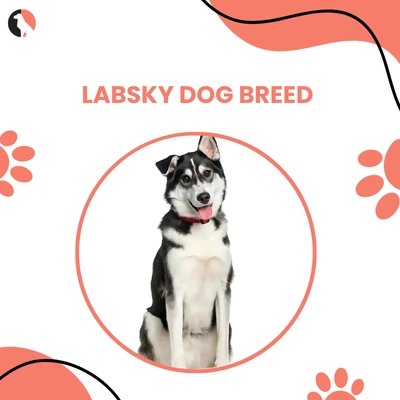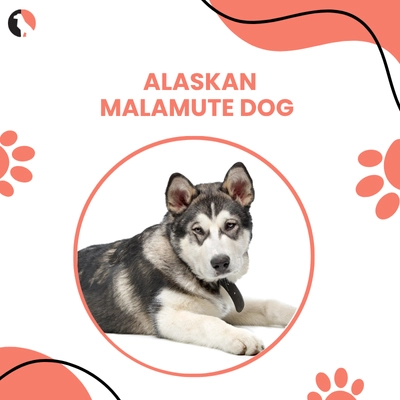“The greatness of a nation and its moral progress can be judged by the way its animals are treated.” – Mahatma Gandhi
Imagine a hard-working dog who loves more, and thinks quicker. You have an English-Shepherd as a canine companion. No fads, no fashions, but hard-devoted, intelligent, born-to-work. Not only are these shepherd dogs super smart with animals, they are super smart with children, super sharp in their field of application, and super loyal.
The English-Shepherd with its amazing abilities remains one of the most well-kept secrets of dogs in America. This type of breed is unique in the sense that it is very versatile, even-tempered, and has a long working history. As other breeds of Shepherd gain most of the attention, through German Shepherd, Border Collie, and Australian Shepherd, the English Shepherd is performing well in real-life settings, particularly at farms and in the family setup.
This article discusses all that you need to know about the English shepherd dog, what its origin is, what its characteristics or traits are, as well as training tips, comparisons with other shepherd dog types, and even whether this breed of dog is suitable for your lifestyle.
Origin of the English Shepherd
However, before we take a deep dive into traits and care, we should know where this breed originated and why it is so good nowadays.
A British Isles Heritage
The origin of the English Shepherd dates back to the British Isles. Colonial America received rough farm dogs with the people. The breeding of these dogs was not really based on appearance but on intelligence, agility, and stamina, as those qualities are observed to be in existence to date.
Evolving with American Agriculture
Dogs had to multiply the functions in early America: they had to herd, guard, hunt, and defend. That is why the Shepherd breed was developed. These were not the kennel-kept show-dogs. They were tested, they were faithful to land and their people. With time, they developed into modern multi-talented Shepherd dogs, still being found on family farms in the U.S.
“The English Shepherd is America’s heritage dog: a working partner shaped by generations of need, not show.”
Visit: German Shepherd vs Belgian Malinois: Breed Comparison
Major Characteristics of the English Shepherd
What are the selling features of this breed in relation to other types of shepherd dogs?
Intelligence and Trainability
The Shepherds are highly intelligent dogs. They rapidly absorb instructions, routines, and also pick up things you did not train them. This intelligence does not imply that they are always obedient; they think independently, and this is necessary to work on independent tasks such as herding.
- They are high on adaptive intelligence: grasping new tasks with little repetition.
- They are problem-solvers, and that is why they make good agility sports, obedience, as well as search and rescue work.
Temper and Personality
Expect even-minded assurance with uniform flashes of energy. These are dogs:
- Devoted yet not clingy
- Not hyper-social but sociable and friendly
- Calm and vigilant, though not hostile
They get well attached to the families and are kind to children, and in this way, they make good family pets.
Discover: Siberian Husky Breed Guide: Traits, Care, and Training Tips
Energy and Activity Requirement
It is not a dog that says, boys, we had better take one walk. The English Shepherd dog needs:
- Physical activity of 60-90 minutes each day
- Intellectual stimulation by use of scent games, puzzles, or training games
- Run around or an organized play area when yardless
In the absence of any activity, they might turn out to be destructive or anxious.
What Jobs Do English Shepherds Excel At?
They are utility dogs. They’re not specialized in one thing—they’re great at many:
- Herding: They work both cattle and sheep with silent, sweeping movements.
- Hunting: Their strong scenting skills make them helpful in finding game or vermin.
- Guarding: They won’t attack but will alert you with a purpose.
- Companionship: They know how to switch off and just be with you.
Compared to other shepherd dogs, their “jack-of-all-trades” nature makes them more practical for homesteads, rural areas, or active suburban households.
Explore: Most Aggressive Dog Breeds: Understanding Mean and Dangerous Dogs
Breed Standards and Appearance
Size and Build
- Males: 45–60 lbs, 19–23 inches tall
- Females: 40–55 lbs, 18–22 inches tall
They’re medium-sized, well-muscled, and agile. Not bulky like some other shepherd breeds.
Coat and Colors
The English-Shepherd sports a weather-resistant double coat. It may be straight or wavy and comes in:
- Black and tan
- Sable and white
- Tri-color
- Black and white
Their feathered tails and intelligent eyes give them a distinctive, expressive look.
Care and Grooming
These dogs are easy to handle, although they have a beautiful coat.
- Brushing: Twice a week. More in shedding times.
- Bathing: Every 4-6 weeks or when they are dirty.
- Nail trimming: Every month or all it is needed.
- Tooth ownership: Brushing once a week to prevent tartar.
Their coats are easily dirt resistant, and as such, they do not require very rigorous grooming sessions like longer-haired shepherd dogs such as the Aussies or Rough Collies.
Learn More: Toy Poodle Breed Guide: Everything You Need to Know About This Tiny, Smart Companion
Nutrition and Diet
In this highly active shepherd dog, diet is an essential part:
- Protein: 25-30% in the case of adults, and more so, working dogs
- Fats: Good ones will include salmon oil to keep the coat and energy up
- Carbs: Sweet potatoes, brown rice, and peas help digestion
- Portion control: Stop obesity by doing food measurement and adapting to energy output
Feed two times a day and select high-quality, reviewed brands. You may use canine nutrition by referring to such sources as PetMD.
Health & Lifespan
The English-Shepherd is generally a healthy breed with fewer genetic issues than some modern shepherd breeds.
Common Issues to Monitor
- Hip dysplasia
- Elbow dysplasia
- Eye disorders (like progressive retinal atrophy)
- Allergies (mild skin sensitivity)
Lifespan: 12–15 Years
That’s longer than German Shepherds (9–13 years) and comparable to Border Collies. They prosper when exercised, fed well, and mentally enriched.
Check this out: Labrador Retrievers: The Most Popular Dog in the World
English Shepherd vs Other Shepherd Dog Types
| Feature | English Shepherd | German Shepherd | Australian Shepherd | Border Collie |
| Intelligence | Very High | High | Very High | Very High |
| Energy Level | Medium–High | High | Very High | Very High |
| Friendliness with Children | Excellent | Moderate | Very Good | Good |
| Guarding Instinct | Moderate | High | Low | Low |
| Lifespan | 12–15 years | 9–13 years | 10–13 years | 12–14 years |
| Coat Maintenance | Moderate | High | High | High |
They offer the most balance between herding skills, family life, and overall health.
English Shepherd Training Tips
These dogs excel in well-organized positive training. This is how to bring out the best of them:
- Become early: Puppies should be socialized before 16 weeks
- Positive reinforcement: Positive feedback, such as food, play, and praise, works better than negative corrections
- Training frequency: It should be done on a daily basis; two sessions of 10 minutes each.
- Training using instincts: Practice herding using frisbee, fetch, and nose work
- Mixed up routines: They hate seeing and doing the same thing over and over again
Review higher methods by using American Kennel Club (AKC) training materials.
Final Thoughts
The English Shepherd may be your typical shepherd dog, but it is a work-friendly, family-friendly, and genius breed. To the person who desires a thinking dog, that thinks out issues as to how to gather and herd sheep, defend the home, watch the children, and sit by the fire in one, this dog breed would serve the purpose.
When all other show dogs became overbred, the shepherd dog became an emblem of a working dog: loyal, able, and unspeakably intelligent.























































































